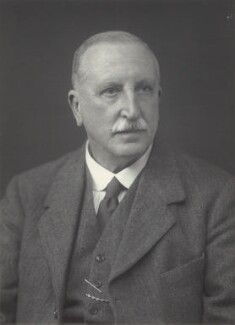Charles Close facts for kids
Quick facts for kids
Charles Close
|
|
|---|---|

Arden-Close in January 1928.
|
|
| Born | 10 August 1865 Jersey |
| Died | 19 December 1952 (aged 87) Winchester, Hampshire, England |
| Allegiance | United Kingdom |
| Service/ |
British Army |
| Years of service | 1884–1922 |
| Rank | Colonel |
| Commands held | Ordnance Survey |
| Battles/wars | World War I |
| Awards | Knight Commander of the Order of the British Empire Companion of the Order of the Bath Companion of the Order of St Michael and St George Fellow of the Royal Society |
Colonel Sir Charles Frederick Arden-Close (born August 10, 1865 – died December 19, 1952) was a famous British geographer and surveyor. A geographer studies the Earth's features and how people interact with them. A surveyor measures and maps land. He was the Director General of the Ordnance Survey, which is the national mapping agency of Great Britain, from 1911 to 1922. He made sure maps were super detailed and accurate. His work helped create many maps that are still considered amazing examples of map-making from that time. He was born Charles Frederick Close and later changed his name to Arden-Close in 1938.
Contents
Early Life and Education
Charles Close was born in Jersey, an island. He was the oldest of eleven children. His father was also a military person.
He went to the Royal Military Academy at Woolwich. This school taught military engineering and how to use artillery (big guns). He was very good at mathematics. After school, he joined the Royal Engineers in 1884. This is a special part of the army that deals with engineering. He served at the School of Military Engineering in Chatham, in Gibraltar, and in India.
Mapping the World
In 1889, Close was sent to the survey of India. There, he worked on creating detailed maps of the land, called topographic work, in Burma. He also did triangulation in Mandalay. Triangulation is a way of measuring distances and positions using triangles.
Later, he was sent to eastern Nigeria. His job was to survey the border with the German Cameroon. After joining the Ordnance Survey, he did a lot of mapping work in central, eastern, and southern Africa.
Close led a small surveying team during the Second Boer War. This was a conflict in South Africa. In 1902, he returned to Chatham. He became the chief instructor of surveying at the School of Military Engineering. His book, Text Book of Topographical and Geographical Surveying, was published in 1905. It became the main textbook for surveying.
Before leading the Ordnance Survey, Close worked at the War Office. He was the head of MO4, which was the Geographical Section of the General Staff. He held this position until 1911.
Leading the Ordnance Survey
In 1911, Charles Close became the Director General of the Ordnance Survey. He held this important job until 1922. He brought in more scientific ways of working at the Ordnance Survey. He also started a second geodetic levelling of the United Kingdom. Geodetic levelling is a very precise way to measure heights across a large area.
He wanted to create one-inch maps that looked completely new. These maps had a scale of 1:63,360, meaning one inch on the map equaled one mile in real life. The first of these new maps was for the Killarney district in Ireland. At that time, Ireland was part of the UK. These maps used color printing and very exact printing methods. Because they were so expensive to make, Close had to simplify his plans. A simpler style was adopted, but this design still set the standard for all the one-inch maps that came after.
Later Life and Achievements
Charles Close got married in 1913. He had two sons and one daughter. He was made a knight in 1918. This honor was given to him because of the amazing work the Ordnance Survey did during World War I. During the war, they produced over 30 million maps!
In 1919, he was chosen as a Fellow of the Royal Society. This is a very high honor for scientists. After he retired in 1922, he became the secretary of the International Geographical Congress. Close was also a long-time member of the Royal Geographical Society. In 1927, he received their Victoria Gold Medal. He was also elected President of the society from 1927 to 1930.
Close changed his last name to Arden-Close in August 1938. He passed away in Winchester, Hampshire, on December 19, 1952, at the age of 87.
The The Charles Close Society for the Study of Ordnance Survey Maps was started in 1980. This society helps people learn more about the maps and work of the Ordnance Survey.

